Volcano trekking in Panama
Climbing up a volcano and seeing two oceans at once when you reach the top is what adventure is all about. With little in the way of fitness but thirsty for adventure, Coralie Modschiedler attempts the climb of her life in Panama. Little did she know how challenging it would be…
THE LAST HURDLE
The rain is getting worse. I’m soaking wet and can’t see anyone around me. My water and food supplies are running low and I’m starting to shiver. I’m so exhausted I can’t feel my legs, but I know I need to keep moving. How the weather could go from hot and humid to wet and cold in a matter of hours still puzzles me. The campsite where I’ll sleep tonight can’t be far now. I’m sure I’m nearly there.
FOURS DAYS TO GO
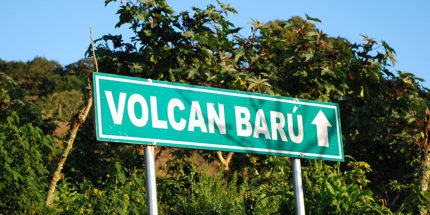 Volcán Barú is Panama’s highest point at 3,474m (11,397ft)
Volcán Barú is Panama’s highest point at 3,474m (11,397ft)WTG / Coralie Modschiedler
Nevertheless, I’m about to take part in the first ‘Boquete Barú Eco Fest’ joining hundreds of trekkers from all over the world, from curious tourists and experienced walkers to local guides. The trek should take between four and 10 hours over very challenging terrain. This doesn’t bode well but I’m up for the adventure.
After a few days visiting Panama City (the new part of town is very Miami-like) and the famous Panama Canal at the Miraflores Locks, the time has come. A short drive from my hotel in Boquete lies the entrance to Volcán Barú National Park. The climb starts at the park ranger’s station. It’s 6.30am and I’m planning to reach the Los Fogones campsite – 12.5km (7 miles) away – by 3pm. Others have bravely opted to trek at night to avoid the relentless heat and stifling humidity and still arrive in time for the sunrise.
THE CLIMB
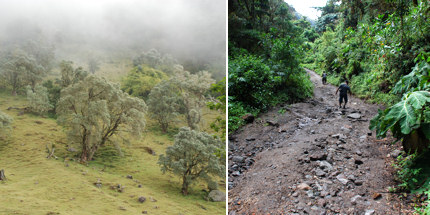 From misty forests to rocky roads
From misty forests to rocky roadsWTG / Coralie Modschiedler
Two hours in, the path becomes much steeper and narrower. The weather also turns misty. I need to make sure I reach the campsite before the rain starts. The trek is increasingly challenging and my energy levels start to wane. I take regular short breaks to recuperate. I meet a lot of friendly hikers along the way. Some offer to carry my bag (do I look that tired?) but I don’t want to take the easy option so I politely decline. One Panamanian family become my companions; Dores, her son and husband tell me (in English) about their life and daughter. The son is about my age and surprisingly struggles as much as me, despite being a regular football player. If anything, the parents are faster than us!
Six hours in, I’m still three kilometres away from the campsite and torrential rain starts. Thank god I brought a poncho! I’m not too far now but I feel completely drained. The Panamanian family has increased their pace so I’ve lost sight of them. I’m alone and cold but I know I need to keep moving.
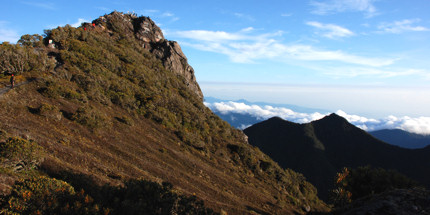 Climb all the way to the top for magnificent views
Climb all the way to the top for magnificent viewsWTG / Coralie Modschiedler
Oh no, water is leaking into the tent. And there’s no phone signal of course. I head for the centre of the base camp a few metres away consisting of a dilapidated open-walled hut missing part of the floor – not quite what I had in mind. It’s packed with people and despite a couple of attempts to join the group, there simply isn’t enough space for everyone. I return to my tent. Hours pass and feel like days. It’s a long, lonely night.
OCEAN VIEWS
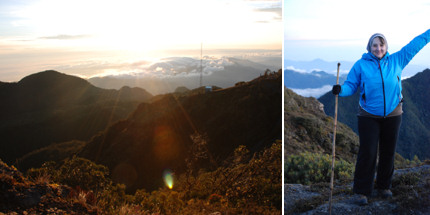 Watch the sun rise as you reach the top of Volcán Barú
Watch the sun rise as you reach the top of Volcán BarúWTG / Coralie Modschiedler
After spending an hour or so on the peak, I return to the campsite and make my descent. Gilberto takes my camping gear and goes ahead. It only takes me about four hours to return to the ranger’s station and I enjoy every minute of it. Well, the pain in my feet towards the end is truly excruciating but as I cross the virtual finish line, I feel exhilarated.
The only thought going through my head? I did it! I got to the top of Volcán Barú! I later learn that because of the heavy rain, a lot of people had turned back – out of the 300 people who began the ascent, only 130 made it to the summit and only about 80 stayed the night. I can’t believe I’m one of them! And I’ve proved it’s not just for experienced trekkers – unfit people with determination can do it too.
THE DETAILS
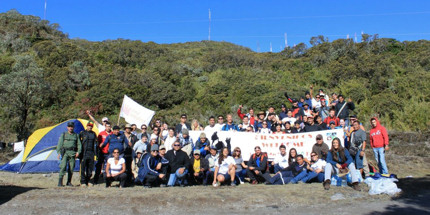 Share the experience with trekkers from all nationalities
Share the experience with trekkers from all nationalitiesTravis Taliaferro
Must-haves for the trek: A good backpack, quick-dry underwear, warm waterproof clothing, jumper, trekking shoes, sunscreen, mosquito repellent, toilet paper, first-aid kit, two 1L aluminium water bottles and energy bars.
Camping essentials: Tent, sleeping bag, change of clothes, gloves, fleece, head lamp and sanitizer.
Insider tips: The atmosphere during the group climb is unique as you meet and share the experience with hundreds of trekkers from all nationalities, but if you want to climb up Volcán Barú at another time of year, make sure you go with a guide. Another way up is via a 4-wheel drive, which takes 45 minutes. And if you want to record the experience, consider carrying a tape recorder.
Getting there: Several airlines offer flights to Panama City from the UK but one of the best options is KLM. The closest airport to the Volcán Barú National Park is David in the Chiriquí Province. From there, it’s easy to transfer to Boquete by car.
Where to stay: Valle Escondido Resort Golf and Spa is a well-located luxury resort surrounded by lush greenery.
Best time to go: During the dry season January-March.
Do you have any Feedback about this page?
© 2025 Columbus Travel Media Ltd. All rights reserved. No part of this site may be reproduced without our written permission, click here for information on Columbus Content Solutions.









 You know where
You know where